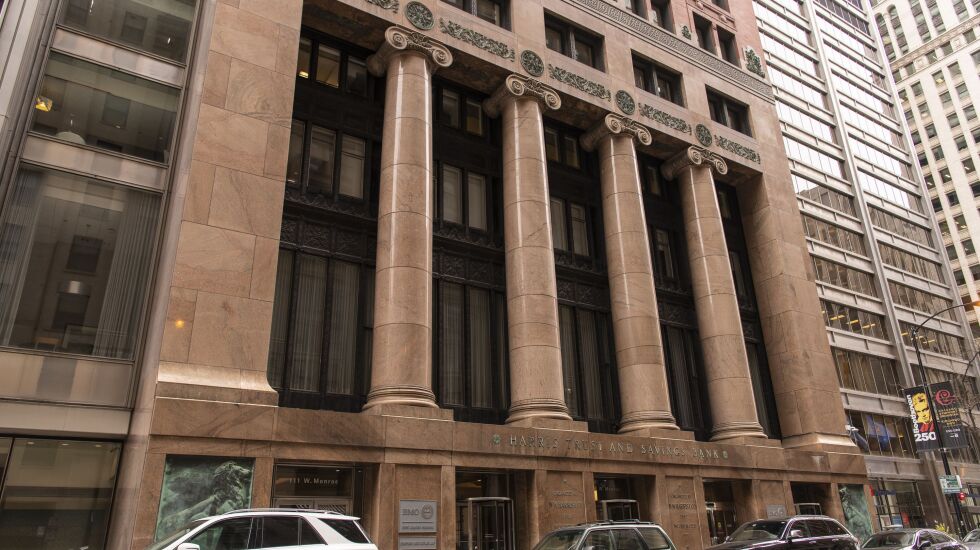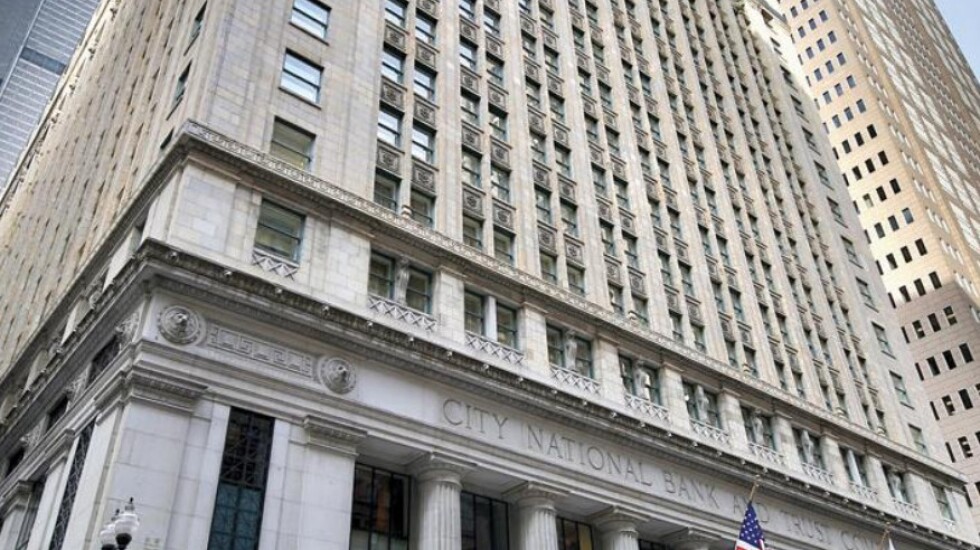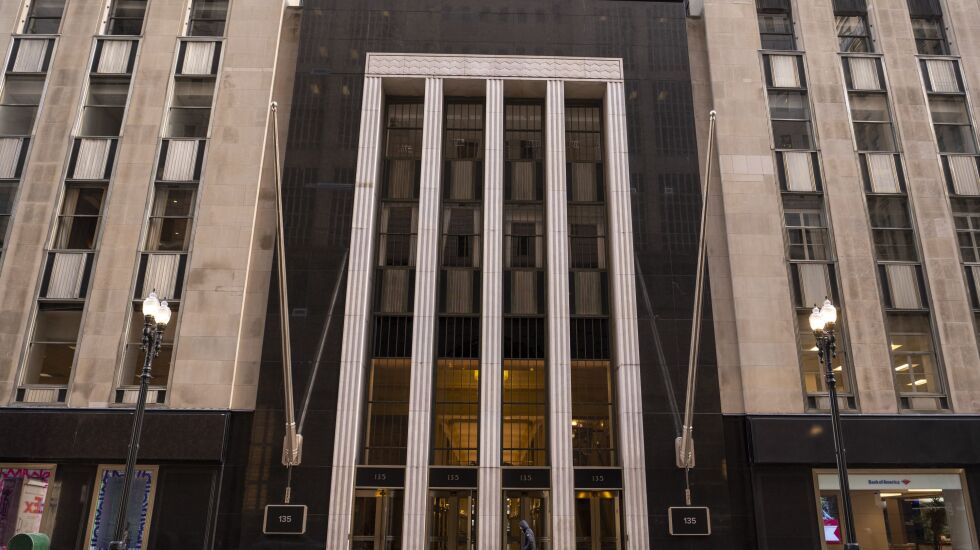
Leaving her mark on a downtown redevelopment effort in the final weeks of her administration, Mayor Lori Lightfoot is naming three plans for mixed-income housing as eligible for city subsidies.
The decision advances ideas from two prominent developers to revitalize aging buildings along or near La Salle Street that have grand architecture but have fallen out of favor for office use. Taken together, the projects call for more than 1,000 housing units and more than $550 million in investment.
The plans the administration favors include two from developer Michael Reschke involving a building at 208 S. La Salle and, with co-developer Quintin Primo III, one at 111 W. Monroe St. The third project is from developer John O’Donnell and is for 135 S. La Salle, former home of Bank of America. Both of the La Salle buildings are city landmarks.
The developers have agreed that more than 300 of the new housing units will be affordable under the city’s rules. The teams the city picked “represent a diverse group of Chicago’s best,” said Samir Mayekar, deputy mayor for economic development.
The affordability requirement was a main tenet of Lightfoot’s La Salle Street Reimagined initiative, which invited developers to submit proposals for reducing vacancies in office and retail space in what was Chicago’s nerve center for finance. Developers have a big incentive to play along: the city is dangling millions of dollars in tax increment financing as potential subsidies.
“The La Salle Street corridor is a vital economic engine for our entire city, and we must ensure it remains that way by transforming it from a homogenous office district into a thriving, mixed-use community,” Lightfoot said in remarks prepared for Tuesday’s announcement. “By converting underutilized office space to residential units, we will make the Loop a safer, more dynamic and vibrant place to live and work.”
The affordable housing would be rented to people who earn an average of 60% of the area’s median income. Under current federal rules, that means an income limit of $50,040 for a two-person household.
The three winning developments have made public TIF requests totaling $188 million, but how much they get will be negotiated along with other details. Work could start in 2024.
The negotiations will proceed under a new mayor, but Mayekar said that should make little difference. He said the next administration will advance the work to help downtown’s economy recover from the pandemic.
A new mayor “is going to face the same post-pandemic challenges that we faced,” Mayekar said. Meanwhile, “There’s a tremendous amount of excitement on the La Salle corridor based on these announcements,” he said.
But the projects are expensive, involve redesigning whole floors and come along as banks are growing nervous about commercial real estate. Some experts believe values will decline as offices shrink from the work-from-home trend. And the federal rescue of Silicon Valley Bank has made other lenders look at the risk in what they own.
Asked about that, Mayekar said, “We have a high degree of confidence that these [projects] will move forward.” He said each is from a proven developer who offers ample evidence of financial backing.
Also, the projects could draw on a variety of subsidies, including tax credits for affordable housing and for preserving landmark buildings.
The three winners were drawn from six short-listed responses to the city’s call late last year for La Salle. The city’s Department of Planning and Development scrutinized the entries.
In favoring the two projects submitted by Reschke, the city backed a developer already with a winning hand. He worked out a deal with Gov. J.B. Pritzker last year to bring Google into the Thompson Center at La Salle and Randolph and move state government employees to 115 S. La Salle, giving the Loop a shot in the arm.
Reschke, who could not be reached for comment, has become a leading spokesman for downtown’s revival even as the West Loop and Fulton Market have drawn the newest attention.
O’Donnell, CEO of Riverside Investment & Development, has built high-rises at 110 N. Wacker Drive and at 320 S. Canal St. for banks that left La Salle. He declined to comment.
A summary of the three proposals:
111 W. Monroe St.
Reschke’s Prime Group and Primo’s Capri Interests propose 349 residences, 30% affordable, with a new hotel on lower floors that would be developed without city help, and underground parking. Cost: $180 million. TIF request: $40 million. Key fact: The former Monroe Club on the top floors would be revived as an amenity for residents and hotel guests.

208 S. La Salle
Prime Group would build 280 units, 30% affordable, with a dog run, fitness center and tenant lounge. The residences would be between the JW Marriott hotel on lower levels and the La Salle Hotel on upper levels. Cost: $130 million. TIF request: $33 million. Key fact: It’s the last building designed by renowned architect Daniel Burnham.

135 S. La Salle
AmTrust Realty joined Riverside Investment to propose turning some office floors into 430 residences, 30% affordable, with new lobbies, retail and event space. Cost: $258 million. TIF request: $115 million. Key fact: The project addresses the space vacated when Bank of America left the building for the West Loop.







